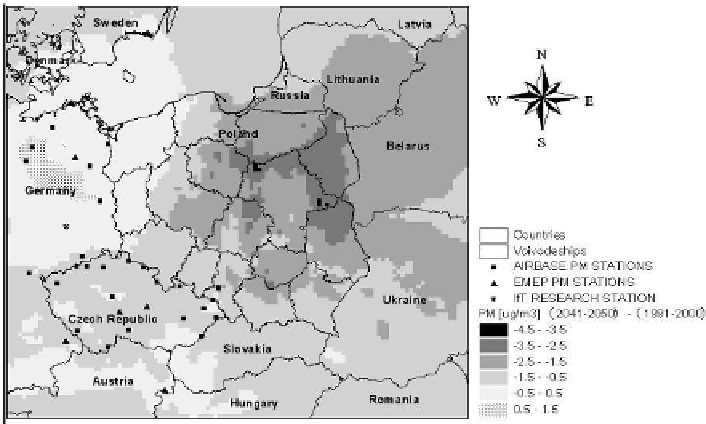Environmental Engineering Reference
In-Depth Information
Fig. 2.
Differences in annual PM
10
concentrations between present day (1991-2000) and near
future (2041-2050) time-slices
4. Conclusions
The overall performance of RegCM3-β/EMIL-v.1/CAMx modelling system is
quite satisfactory, with statistical measures similar for ECHAM and ERA runs.
The system is underpredicting observations, however it is able to capture elevated
PM
10
levels quite well. We believe that this is a result of detailed emission inven-
tory and country-specific emission factors employed in the emission model.
The PM
10
levels predicted for near future decade (2041-2050) show small to
moderate differences compared to present day decade (1991-2000). These results
suggest that impacts of climate changes on PM
10
levels in near future will not be
significant and that the concentrations will slightly decrease for the majority of
Central-Eastern Europe. It is very likely that this decrease is due to increased
precipitation in near future time-slice.
Future work will focus on determining the cause of PM
10
underpredictions as
well as poor model performance for spring/summer. Also we will employ the
EMIL-v.2 emission model with elevated point sources.
Acknowledgments
This work was supported by the Central and Eastern Europe Climate Change
Impact and Vulnerability Assessment Project (CECILIA), financed by EU 6. FP Contract GOCE
037005 to Warsaw University of Technology, Warsaw, Poland.




